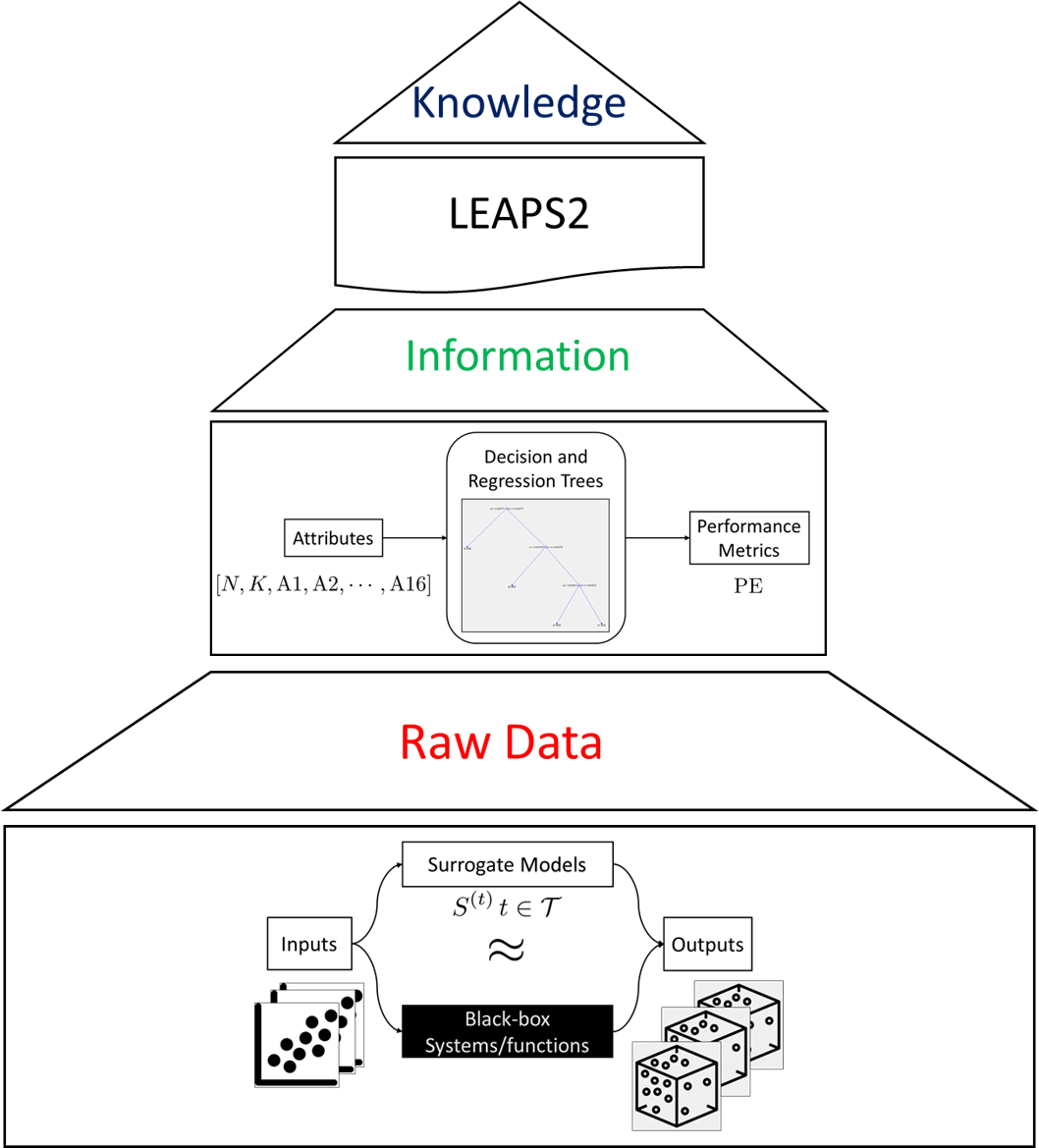Technical Report 197, c4e-Preprint Series, Cambridge
Learning based Evolutionary Assistive Paradigm for Surrogate Selection (LEAPS2)
Reference: Technical Report 197, c4e-Preprint Series, Cambridge, 2018
- A learning-based data-driven paradigm (LEAPS2) is proposed for selecting the best surrogate/s to approximate complex systems.
- The paradigm can evolve along three dimensions viz. data sets, system attributes, and surrogates.
- The evolution of LEAPS2 over data sets is demonstrated via five step progressive learning approach.
- The practicality of LEAPS2 is shown by employing it to estimate the VLE properties of LNG.
 We propose a learning-based paradigm (LEAPS2) to recommend the best surrogate/s with minimal computational effort using the input-output data of a complex physico-numerical system. Emulating the knowledge pyramid, LEAPS2 uses several attributes to extract system information from the data, correlates them with surrogate performances, stores this attribute-surrogate knowledge in a regression tree ensemble, and uses the ensemble to recommend surrogates for unknown systems. We implement LEAPS2 using data from 66 diverse analytical functions, 18 attributes, and 25 surrogates. By progressively adding data, we demonstrate that LEAPS2 learns to improve computational efficiency and functional accuracy. Besides, the architecture of LEAPS2 enables its evolution via more attributes and surrogates. We employ LEAPS2 to recommend surrogates for estimating the bubble and dew point temperatures of LNG. Interestingly, our assistive tool suggests a different surrogate for each temperature, and hints that DPT may be harder to approximate than BPT.
We propose a learning-based paradigm (LEAPS2) to recommend the best surrogate/s with minimal computational effort using the input-output data of a complex physico-numerical system. Emulating the knowledge pyramid, LEAPS2 uses several attributes to extract system information from the data, correlates them with surrogate performances, stores this attribute-surrogate knowledge in a regression tree ensemble, and uses the ensemble to recommend surrogates for unknown systems. We implement LEAPS2 using data from 66 diverse analytical functions, 18 attributes, and 25 surrogates. By progressively adding data, we demonstrate that LEAPS2 learns to improve computational efficiency and functional accuracy. Besides, the architecture of LEAPS2 enables its evolution via more attributes and surrogates. We employ LEAPS2 to recommend surrogates for estimating the bubble and dew point temperatures of LNG. Interestingly, our assistive tool suggests a different surrogate for each temperature, and hints that DPT may be harder to approximate than BPT.
Material from this preprint has been published in Computers & Chemical Engineering.
PDF (1.2 MB)



